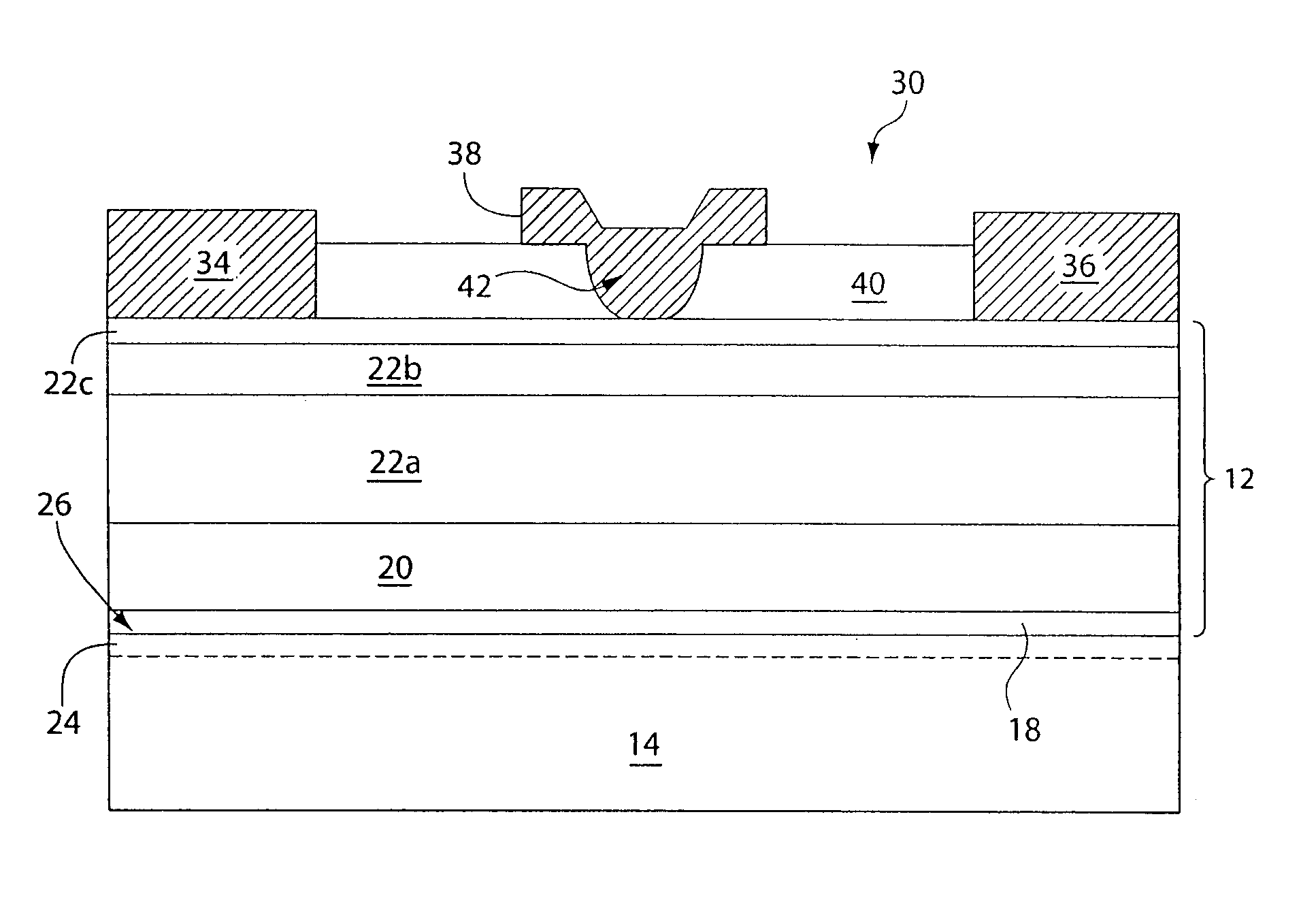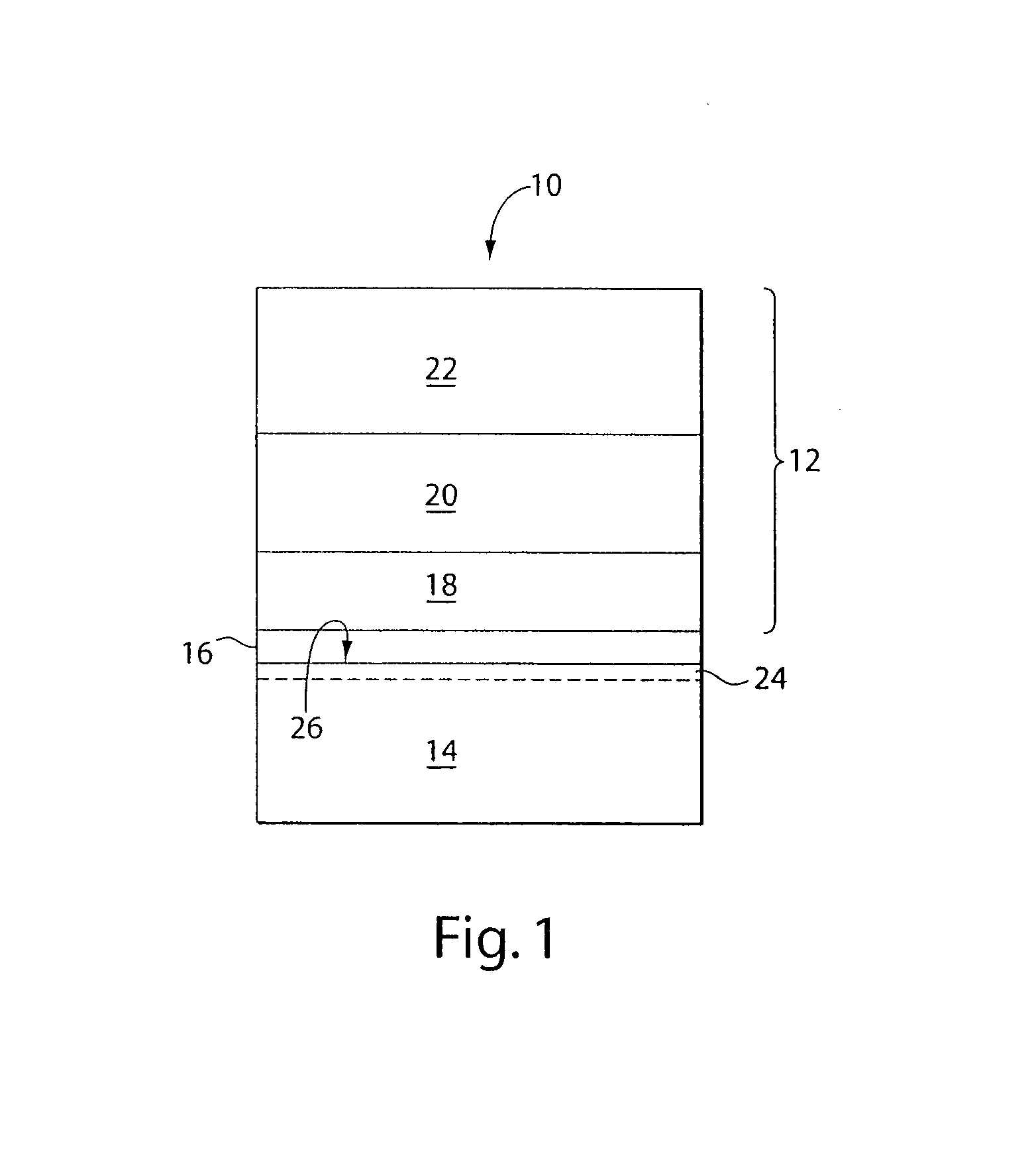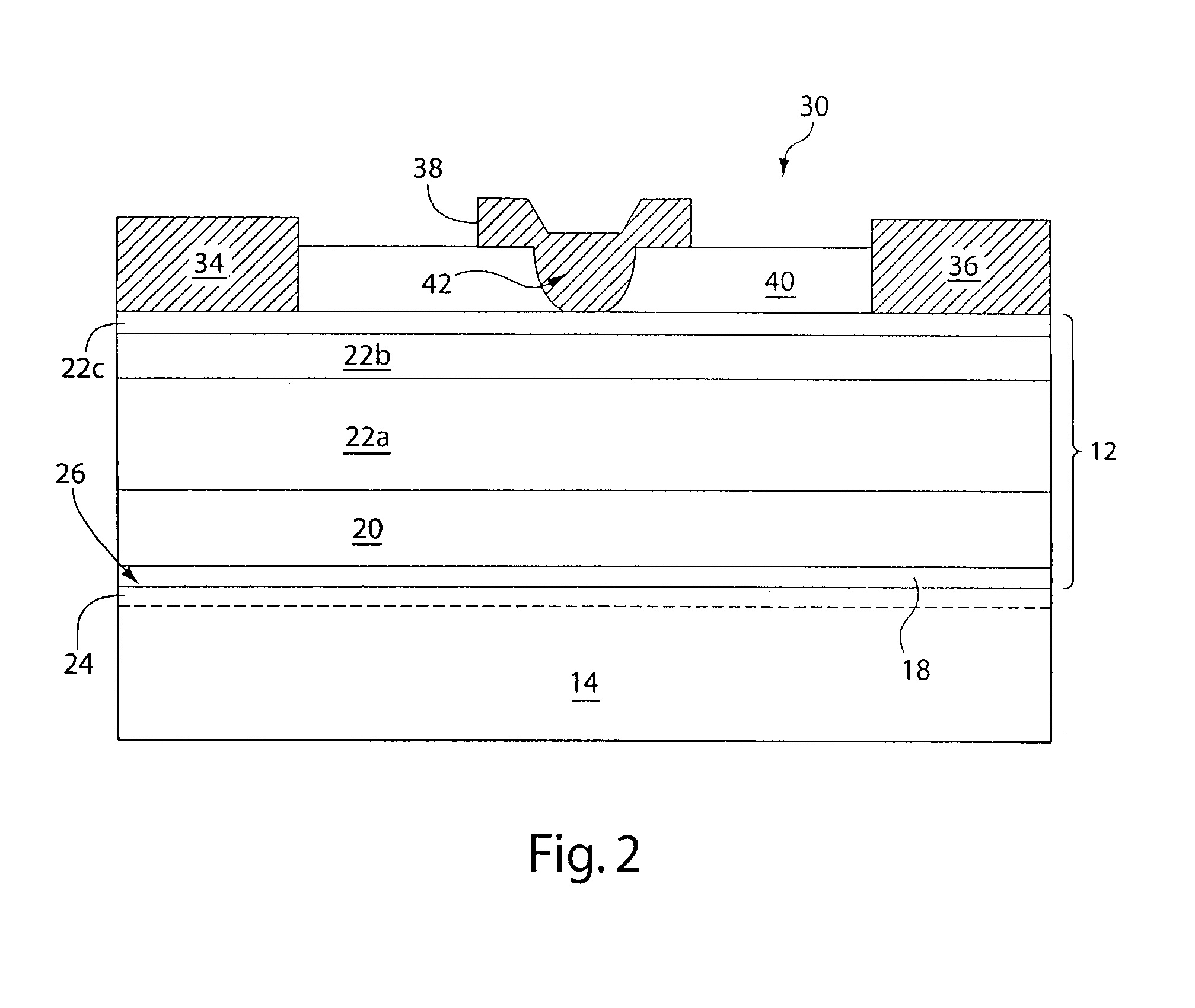III-nitride material structures including silicon substrates
a gallium nitride and substrate technology, applied in the field of iiinitride materials, can solve the problems of limited commercialization of structures and devices that include gallium nitride materials formed on silicon substrates, cracks and/or other types of defects in gallium nitride material layers, and the difference between iii-nitride materials and many substrate materials,
- Summary
- Abstract
- Description
- Claims
- Application Information
AI Technical Summary
Problems solved by technology
Method used
Image
Examples
example 1
[0093]This example compares a structure produced according to a method of the invention that includes a parasitic channel having a reduced free carrier concentration to a structure produced according to a conventional method in which the free carrier concentration of the parasitic channel is not reduced.
[0094]Both methods started with a 100 mm silicon substrate (111) having a resistivity of greater than about 104 ohm-cm. Both methods involved growing an AlN layer on the substrates in a MOCVD reactor at a nominal growth temperature of about 1030° C.
[0095]In the conventional method, the aluminum source gas was introduced into the reactor chamber followed by introduction of the nitrogen source gas.
[0096]In the method of the invention, the nitrogen source gas was introduced into the reactor chamber prior to the introduction of the aluminum source. This is believed to form a silicon nitride layer directly on the surface of the substrate which, as noted in the description above, can funct...
example 2
[0100]This example compares structures produced according to a method of the invention to a structure produced according to a conventional method.
[0101]Both methods started with a 100 mm silicon substrate (111) having a resistivity of greater than about 104 ohm-cm. Both methods involved growth processes in an MOCVD reactor at a nominal growth temperature of about 1030° C. In both cases, an AlN intermediate layer was grown on the silicon substrate; a compositionally-graded AlGaN transition layer was grown on the intermediate layer; a GaN layer was grown on the transition layer; and, an AlGaN layer was grown on the GaN layer.
[0102]In the conventional method, the aluminum source gas was introduced into the reactor chamber followed by introduction of the nitrogen source gas at the start of the growth process.
[0103]In the methods of the invention, the nitrogen source gas was introduced into the reactor chamber prior to the introduction of the aluminum source. This is believed to form a s...
PUM
 Login to View More
Login to View More Abstract
Description
Claims
Application Information
 Login to View More
Login to View More - R&D
- Intellectual Property
- Life Sciences
- Materials
- Tech Scout
- Unparalleled Data Quality
- Higher Quality Content
- 60% Fewer Hallucinations
Browse by: Latest US Patents, China's latest patents, Technical Efficacy Thesaurus, Application Domain, Technology Topic, Popular Technical Reports.
© 2025 PatSnap. All rights reserved.Legal|Privacy policy|Modern Slavery Act Transparency Statement|Sitemap|About US| Contact US: help@patsnap.com



